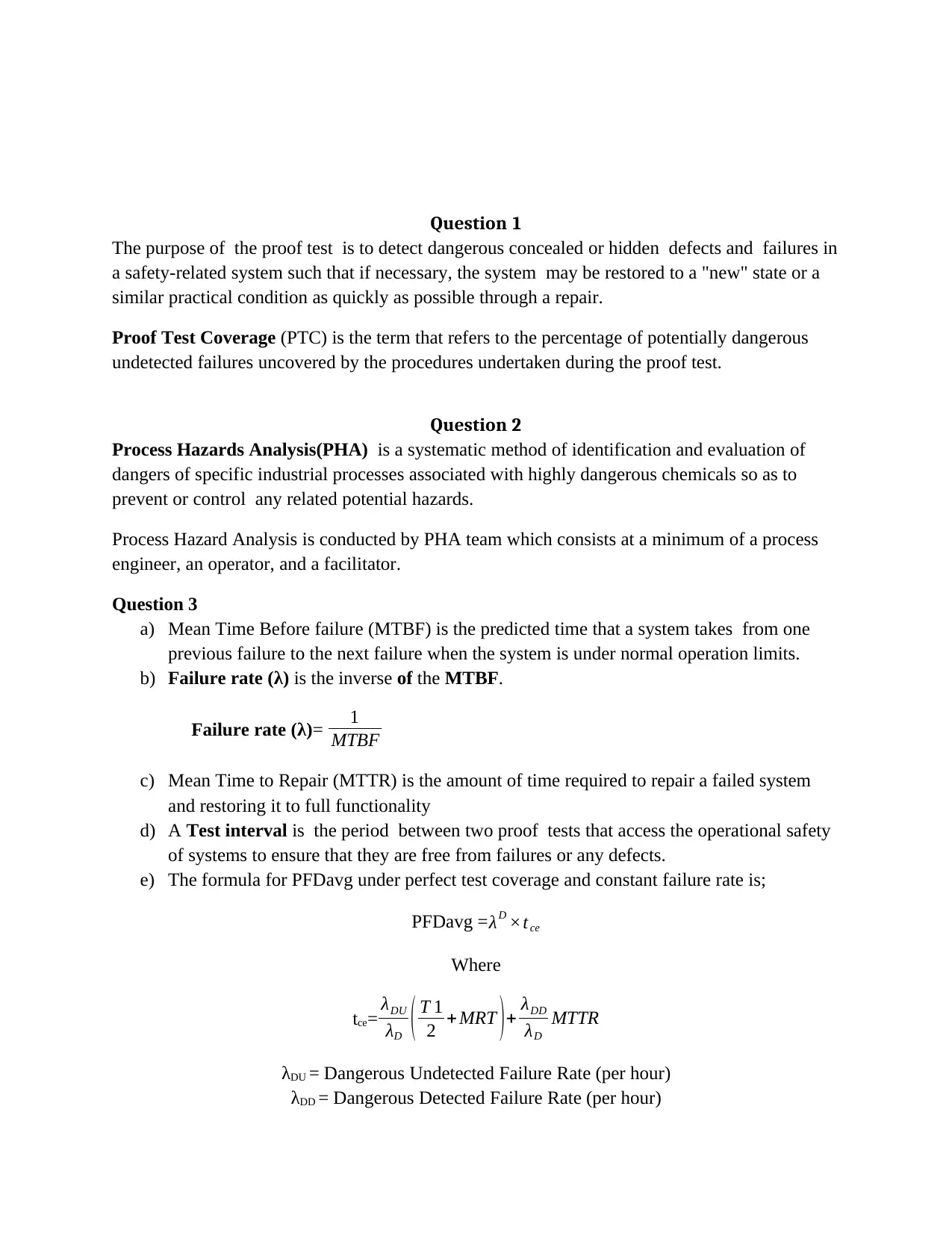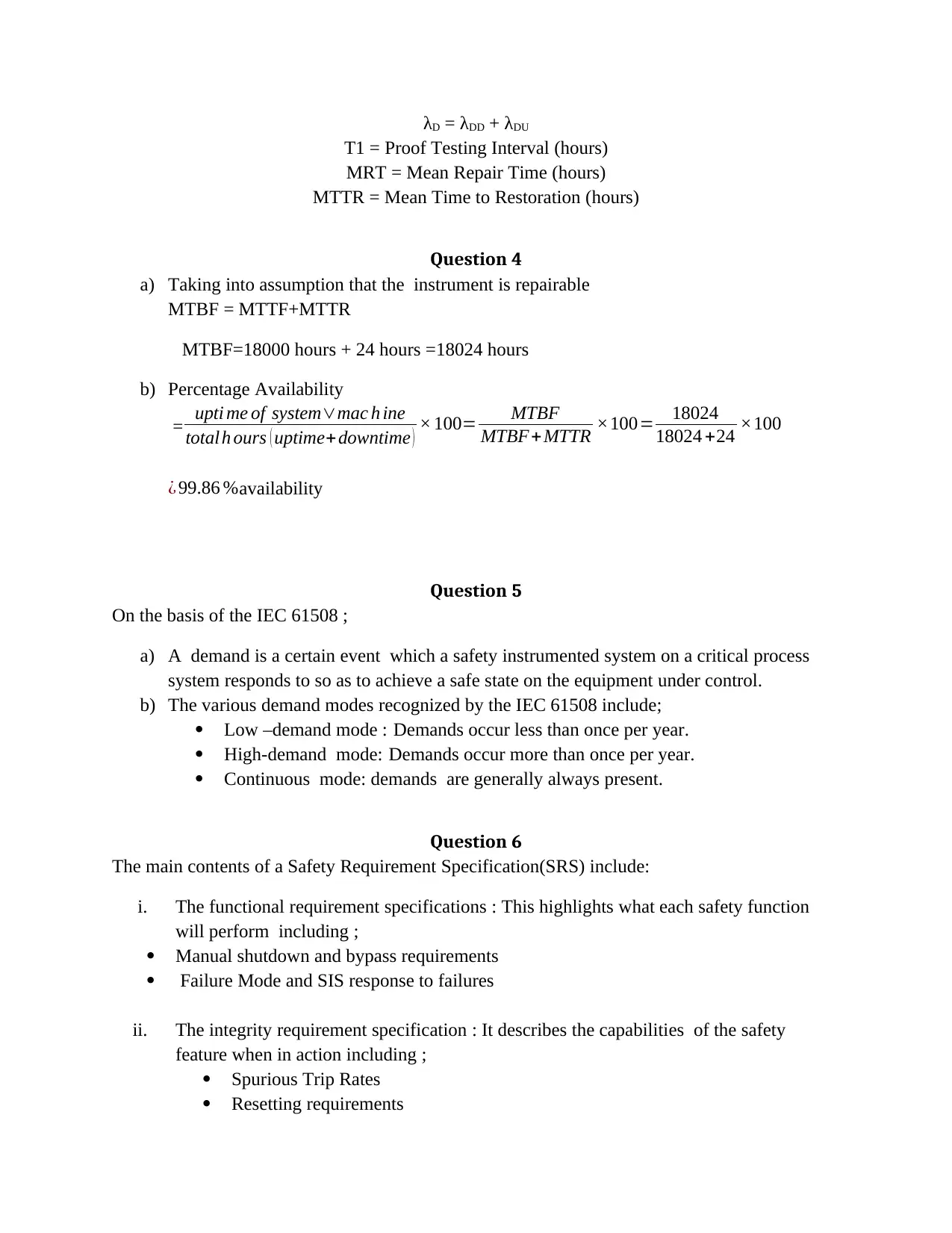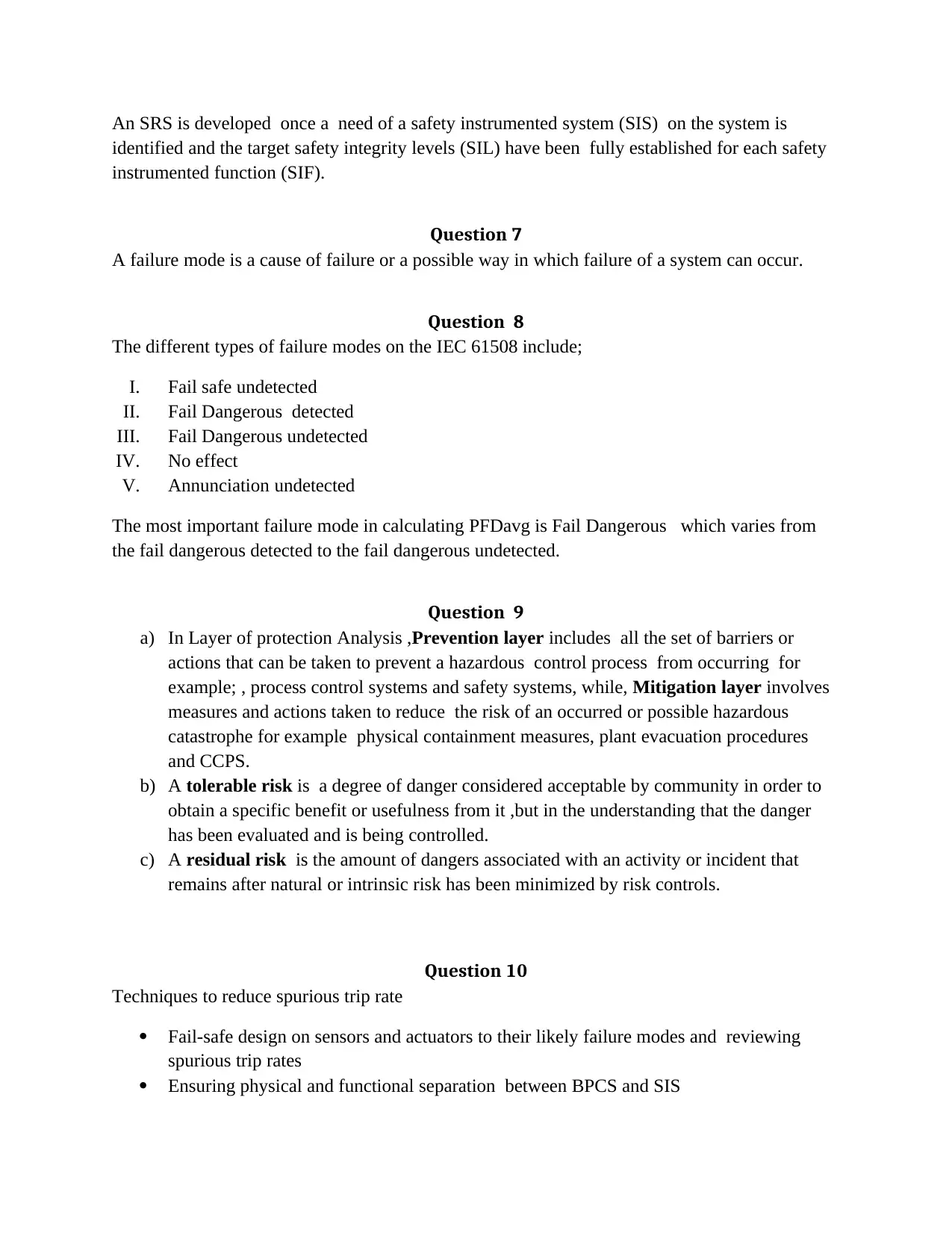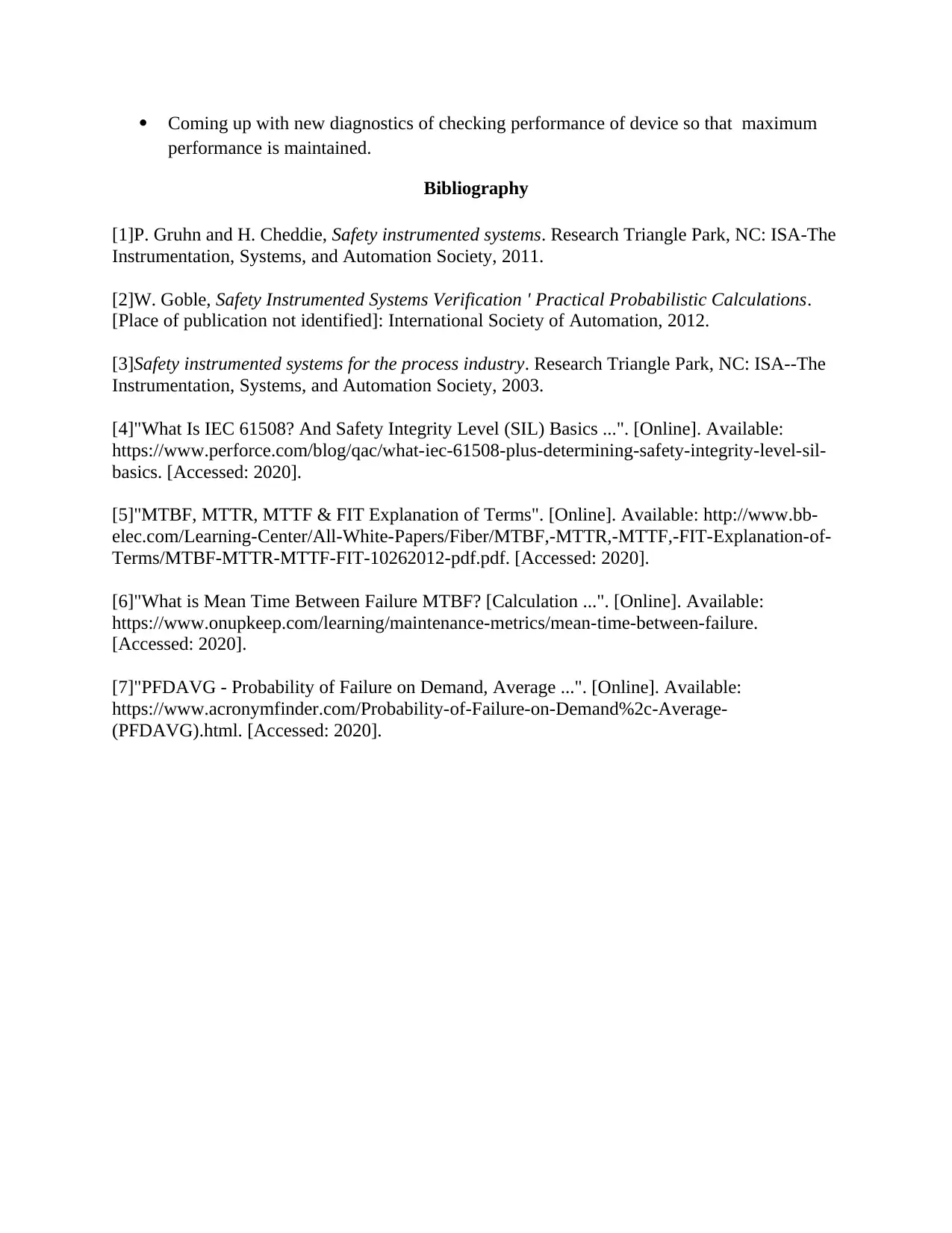Master of Engineering: ME508 Safety Instrumented Systems Assessment 1
VerifiedAdded on 2022/08/13
|5
|1037
|13
Homework Assignment
AI Summary
This document provides a detailed solution to the ME508 Safety Instrumented Systems Assessment 1, covering key concepts in safety engineering. It addresses questions on proof tests, Process Hazards Analysis (PHA), Mean Time Between Failure (MTBF), the IEC 61508 standard, Safety Requirement Specifications (SRS), failure modes, Layer of Protection Analysis (LOPA), and techniques to reduce spurious trip rates. The solution includes explanations of terms like Proof Test Coverage (PTC), dangerous undetected failures, and PFDavg, along with relevant formulas and examples. The document also discusses different demand modes, the contents of an SRS, and various failure modes as defined by IEC 61508. Furthermore, it outlines the prevention and mitigation layers in LOPA and defines tolerable and residual risk. Finally, the document provides techniques to reduce spurious trip rates, ensuring the safety and reliability of safety instrumented systems. The content is structured to provide a thorough understanding of the subject matter, making it a valuable resource for students studying industrial automation and safety engineering.
1 out of 5







![[object Object]](/_next/static/media/star-bottom.7253800d.svg)